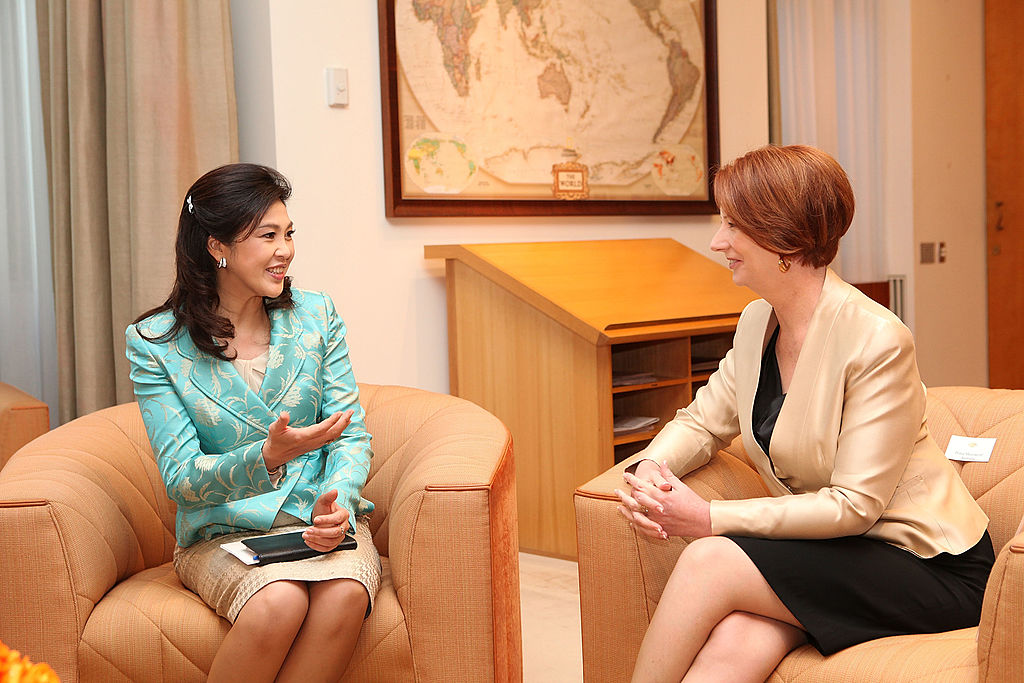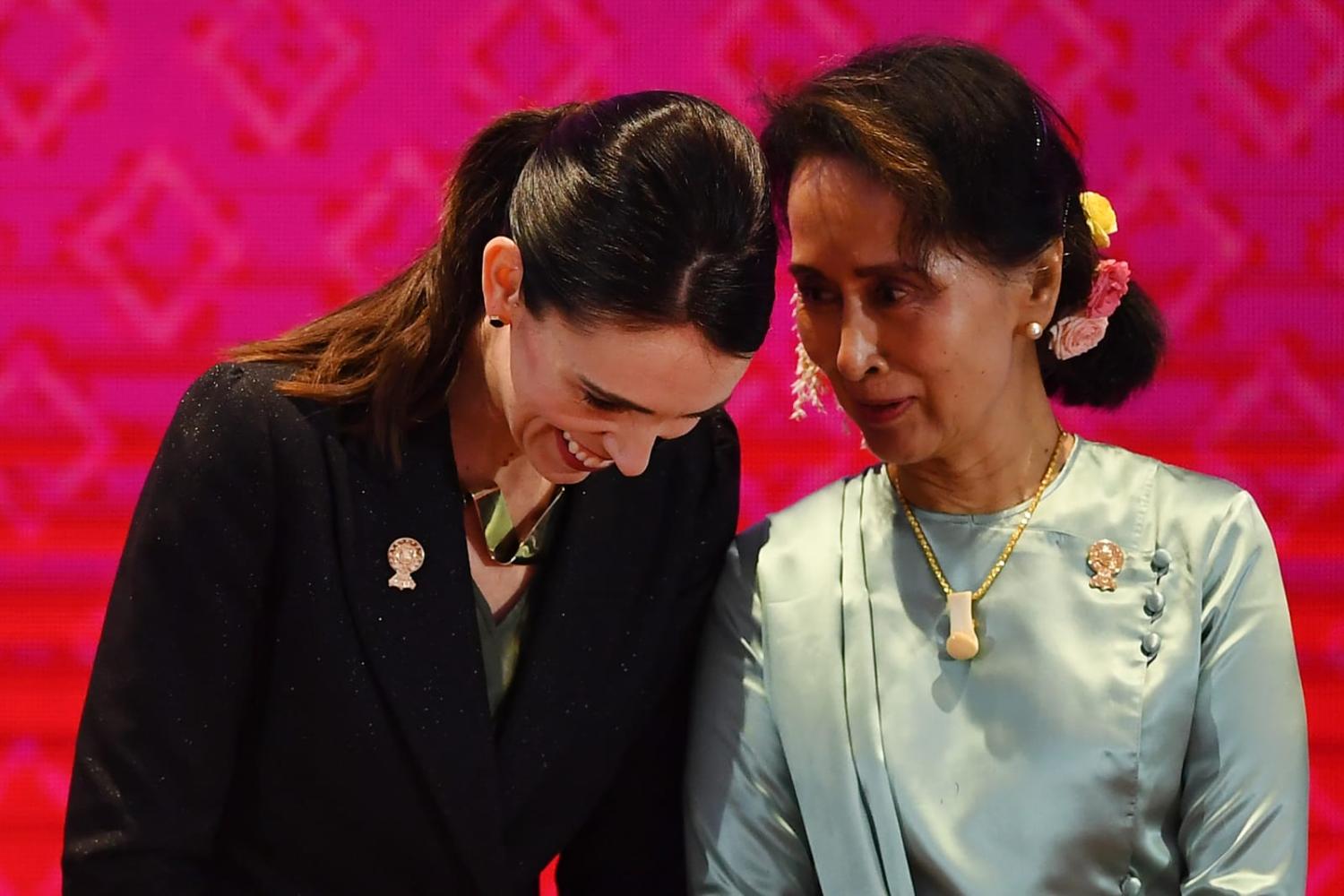What do Nancy Pelosi and Jacinda Ardern have in common? Not much many would say. Yet upon Ardern’s resignation as New Zealand’s 40th Prime Minister and its third female leader (2017–23), Erin Hurley reminded us last week in The Interpreter that Ardern and Pelosi were not that far apart, confronted with the same challenges of sexist questions and gender stereotypes.
But while Pelosi may have been very powerful, she was not the leader of her country. A further opportunity is to draw parallels between Ardern and the other women presidents and prime ministers in our region.
Too often our analysis assumes a split between the Western world and low and middle-income countries. It is rare to see the many female presidents and prime ministers in Asia that have graced the stage compared to other female leaders from the global North. This is despite the fact that they may have far more in common.
Does it matter that Asia’s women prime ministers and presidents do not make the global conversation? I suggest it does and for three reasons.
First, Asian experiences of leadership are an important part of a bigger story that must be told. This is particularly the case given that as of October 2022, there were only around 32 women presidents and prime ministers worldwide. Equatorial Guinea just appointed its first female prime minister at the start of this month. With Ardern’s resignation and in late 2022 the election of Italy’s Georgia Maloni and Liz Truss’ rise and fall in the United Kingdom, the number of female executive leaders worldwide still hovers around this level.
Yet Asia has had many: Thailand’s Yingluck Shinawatra (2011–14); Aung San Suu Kyi (2016–21)’s very romanticised rise to power and her fall; India’s Prime Minister Indira Gandhi (1980–84); Pakistan’s Prime Minister Benazir Bhutto (1988–90 and 1993–96); and the alternating tenures in Bangladesh of Prime Ministers Khaleda Zia (1991–96 and 2001–06) and Sheikh Hasina (1996–2001 and 2009–present). In fact, Bangladesh is the only country in the world where a woman has been a head of government for more years than a man during the last half century.
The rarity of women outnumbering men in the global landscape demands of analysts that we include Asia’s women in the global narrative. Yet often this is not the case. The widely-read Women and leadership: Real lives, real lessons, written by Australian Former Prime Minister Julia Gillard and Nigeria’s Ngozi Okonjo-Iweala, former Nigerian Minister of Foreign Affairs among many other things, did not include a single account of a woman leader from Asia or the Pacific.

Second, telling the Asian stories remind us that these are not “Australian”, or “Asian” or “American” experiences but rather global ones. Ardern arguably had more in common with Pakistan’s Benazir Bhutto, being the only other women world leader to give birth while in office. My own study of women presidents from Sri Lanka, Indonesia and the Philippines makes the parallel experiences of Asia’s leaders with others from outside the region clear. Sri Lankan informants drew positive parallels between Britain’s “iron lady”, Margaret Thatcher (1979–90), once photographed in her kitchen, with Sri Lanka President Kumaratunga’s leadership style: “Chandrika played with that hypermasculinity in her peace agenda”.
Finally, Asia has much to offer the world. Lessons from the region can be extracted for global gain due. I have witnessed first-hand the vibrancy of women’s movements in the region. These activists have frequently used the presence of a women leader to push through reforms to laws on gender-based violence and equality and non-discrimination at work.
There is also something seemingly unique in the small but notable numbers of women who manage a transition from movement activism to politics in the region. Here I think about Filipino Senator Risa Hontiveros, a serving Senator since 2016 or Indonesia’s Nursyahbani Katjasungkana, elected as a Member of Parliament with the Islam-based People’s Awakening Party 2004–09, although without suggesting that the pathway for either was easy.
There is equally much for the global community to learn from the struggles of Filipino women whose reproductive rights were most supressed under the country’s two female presidents. These “Asian” lessons can aid activists seeking to advance reproductive rights in parts of the Americas, Africa and Europe.
Scholars, analysts and activists in Asia have categorised and named the experiences of the region’s women leaders as “Asian” to our detriment. We ultimately devalue the significant roles these women played and it is a loss for global comparative knowledge. Rather than constructing small categories, where nothing neatly fits and everything spills over, perhaps it is about taking down the walls and erasing some of the geographic borders that we naturally turn to. With those walls down, an Asian view may serve a fundamental purpose of offering insights that benefit the global community.

